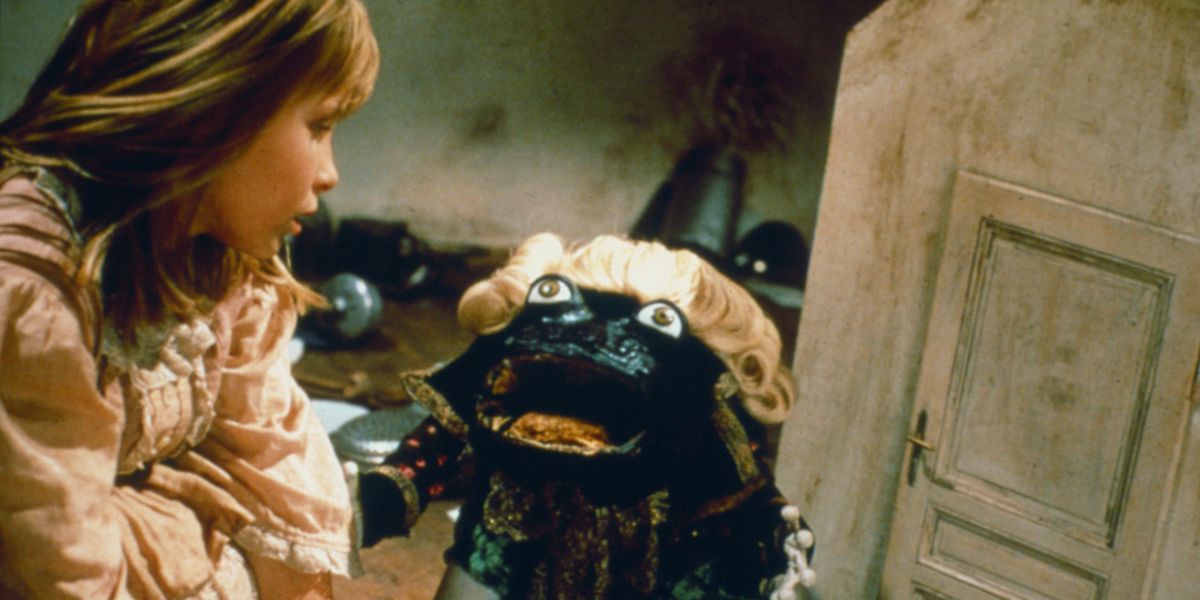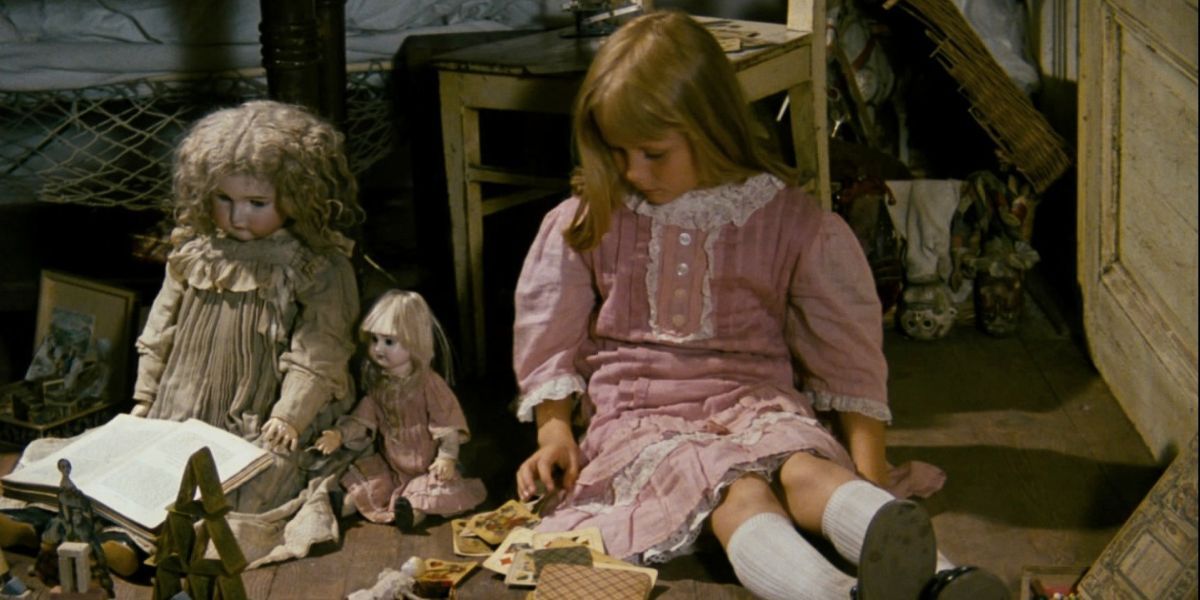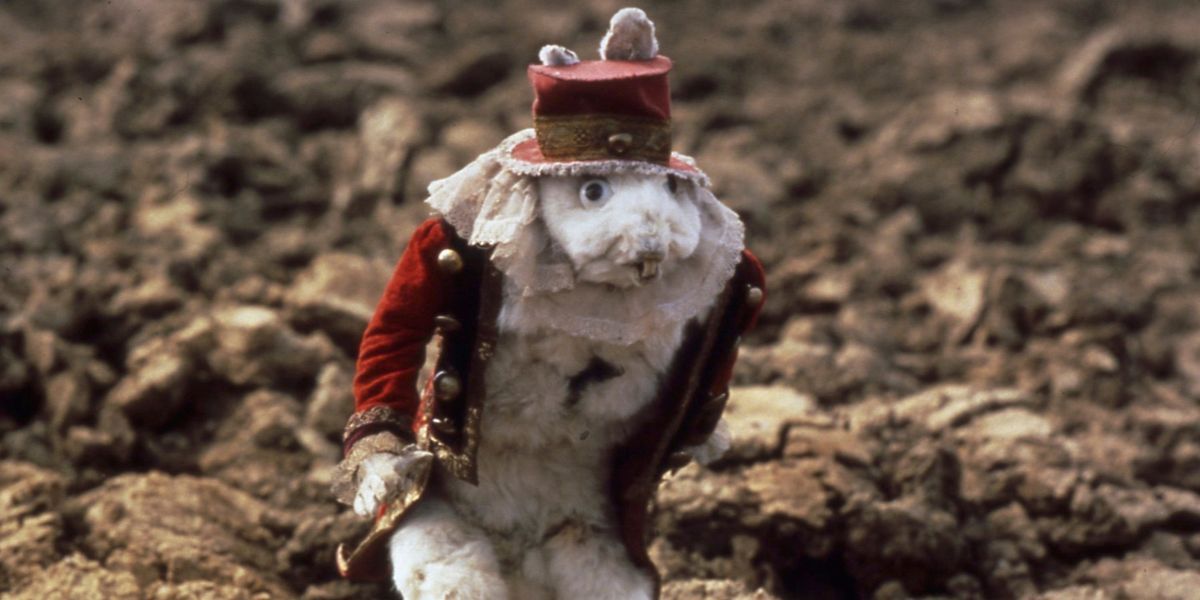“Now you will see a film made for children...perhaps.” So mutters Alice (Kristýna Kohoutová) during the opening credits of the 1988 Czech stop-motion film Alice, a film that makes a living nightmare out of Lewis Carroll’s Alice’s Adventures in Wonderland. That "perhaps," so casually spoken by Alice, is not to be ignored: the following 80-or-so minutes are as odd and unsettling as one could possibly expect from such a movie. Out of household objects, taxidermy animals, a live-action actress, and a whole attic’s worth of morose props, Jan Švankmajer’s surrealist film takes the viewer into a disturbing wonderland that’s sure to be both familiar and uncomfortably bizarre. Compared to the dreamlike wonder of Disney’s 1951 animated Alice in Wonderland, the Johnny Depp-starring, Tim Burton-helmed spectacle from 2010, and most other adaptations of Carroll’s timeless tale, Alice is a terrifying fever dream that’ll leave viewers with an unshakable chill. Imagine Fantastic Mr. Fox directed by David Lynch — Alice is a film so unapologetically faithful to its unique vision that few studios would dare to make it today.
'Alice' Takes a Singular Approach to a Timeless Tale
That Carroll’s Alice books have been so frequently adapted to the screen is unsurprising. They’re whimsical, timeless, and rich with imagination. In his stories, Carroll plays with absurdity and nonsense which exist in intentional contrast to the meticulous logic that pervades much of his work. Because of its inherent silliness, Alice’s Adventures in Wonderland is well-fitted for the kind of playful nature found in the 1951 animated version, Tim Burton’s adaptation, and most of the other interpretations. Though the earliest adaptations of Carroll’s stories are cursed with an eeriness that stems mostly from archaic sets, costume designs, and filmic technology (W.C. Fields as an unintentionally demented Humpty Dumpty in the 1933 film is impossible to forget), 1988’s Alice takes the prize for the most unsettling adaptation to date.
Crafted like a living nightmare, Alice takes the bones of the original stories without altering them significantly. Most of the same beats are still there: the White Rabbit, neurotic, rushes about in fear of being late; the Mad Hatter and the March Hare speak nonsense at a tea party; the Queen of Hearts goes on a decapitating rampage. If the main plot of Carroll’s original Alice remains generally intact, though, his charm and wit is stripped away, leaving behind the weird surrealist core underneath.
Alice basks in these strange, twisted occurrences. It’s the entire point of the film. Instead of leaning into the delightful absurdity of Alice's journey, the film indulges in the logical terror of the story. If a real-life girl suddenly descends into a world where dapper rabbits run about and cookies make her grow larger and smaller with each bite, could it be anything but terrifying? Švankmajer explores this concept with a morbid curiosity, delightfully showing the horrific aspects of Alice’s adventures without ever resorting to forced, heavy-handed horror tropes.
With only a single living actor in the film (Kohoutová, who plays Alice with a matter-of-fact conviction), the rest of the “cast” is made up of the previously mentioned taxidermy animals and macabre creations of bones, skulls, and body parts. They never speak—they’re dead animals, after all—but Alice narrates their would-be lines of dialogue as the center of the tale and thus the logical storyteller. It’s always Alice's voice, and she speaks the lines as if reading from a storybook. It wouldn’t be right to call this a realistic imagining of Alice’s Adventures in Wonderland, but it’s practically as close as we’ll get. By casting a real live girl in the role of Alice, and by “casting” an array of real-life objects animated by cinematic magic, Alice is made impossibly uncanny.
It's absolutely worth noting that the stop-motion animation in Alice is an absolutely fantastic artistic achievement. Using these real-life props and maneuvering them meticulously through the elaborate sets is nothing short of a wonder. Though spectacular on a technical level, the animation often feels uncomfortably real, which is aided by the movie's drab aesthetic. Eschewing the kaleidoscopic psychedelia of the most famous Wonderland adaptations, Alice washes all the lavish, confectionary colors for hues of lifeless browns and grays. It's a brooding, almost depressive pallet of colors or lack thereof.
The scenes in Alice are vaguely connected. One only loosely leads into the next. Alice continues her pursuit of the White Rabbit, but the film glides along with a dreamlike logic that is less concerned with narrative arcs than it is with presenting a barrage of strange and disturbing events that make up her odyssey. It isn’t about how Alice’s adventure changes her. If anything, it’s about what this so-called adventure tells us about her mind.
Its Dark Tone and Morose Visuals Make 'Alice' an Unforgettable Experience
At the start of the film, Alice sits alone in her room, carelessly tossing pebbles into a teacup out of boredom. She’s surrounded by dolls and toys and other things that are too lifeless to keep her company. Among these things is a taxidermy rabbit who suddenly, as if by some sort of dark magic, suddenly springs to life and frees himself from the captivity of his glass display. He chews off the nails that had kept him fixed to the artificial terrain, tearing himself slightly and spilling his innards of sawdust everywhere. Unearthing a hidden drawer, he assembles a flashy outfit (cap, red velvet waistcoat, pocketwatch, the works) and leaps into action. “‘Oh dear, oh dear, I shall be late,’ said the White Rabbit,” narrates Alice.
There’s no understating the outright creepiness of this taxidermy rabbit moving around via stop-motion. It defies the laws of nature, taking a creature that is clearly dead and making it a being of movement. It isn’t just him, either—there are all these macabre creations, most of them skeletons, preserved hides, skulls and bones pasted crudely together, that are animated into life alongside the White Rabbit. There’s a skull-headed lizard wearing a Santa hat, a bird with a monkey skull for a head, a horse skull with a single long bone trailing behind for a body, and enough other disturbing inventions to fill your nightmares for many nights to come. They all look like something Sid from Toy Story would make if he had access to formaldehyde and animal hides.
Alice juxtaposes the dead and the living, injecting the lifeless eerily with life. White Rabbit and his army of haunting creatures are two things at once: dead and living, still and animated. By their very nature, they're devoid of movement, yet through the skillful animation in Alice, they move illogically, always stiffly, with fixed expressions and haunting glares that seem to stare into the deepest recesses of your soul.
Even beyond the inherently creepy taxidermy for which the film is most frequently noted, Alice is a barrage of discomforting imagery. Socks come alive and wiggle like worms from dozens of holes in the floor (trypophobics beware!), before one crawls out from a drawer, dons a pair of dentures, and stares into the camera. At the Mad Hatter’s tea party—one of the most notorious and comical bits from Carroll’s story—the role of March Hare is “played” by one of the creepiest goddamn rabbit dolls I’ve ever seen. And on the topic of creepy dolls (is there any other kind?), once shrunk from the magical elixir, Alice transforms into a porcelain doll and moves around like something out of Annabelle. Watching a taxidermy rabbit running around with a pair of scissors feels like something out of the worst fever dream imaginable.
Needless to say, Alice is crammed with moments that are, if not outright scary, at least unnerving. Even the beginning, in which Alice enters wonderland by being sucked into a small wooden desk, just makes me squeamish.
'Alice' Leaves Us With An Ambiguous—But Haunting—Ending
At the end of Carroll’s novel and most adaptations of it, Alice wakes up from her adventures and finds that it was all only a dream. After being swarmed by the Red Queen and her minions, Alice finds safety in the real world. Left to ponder her strange trip, she shares some tea with her sister. Instead, Alice ends on a different note. Alice awakes from her dream to find that the taxidermy rabbit is missing, the display case broken and the nails that once bound him laying useless on the floor. Could it have been a dream? If so, where did he go? Was it Alice’s imagination, with her playing make-believe with her toys as children often do, crafting stories for them and controlling their movements like some kind of bored god?
The implications are haunting: since we see her taxidermy rabbit before and after her apparent dream, it can be assumed through the logic of storytelling that it is real, though lifeless. Would this imply that these other grotesque creations, these beasts of bones from multiple species crudely combined into one, also are real? Did, then, Alice make them herself, presumably out of the same boredom that sparked her dreamlike descent into Wonderland? If so, where is she getting all these animal corpses, and why is she mutilating them with such unrelenting curiosity?
Implications aside, the film ends on a hell of a note. Looking for her misplaced bunny, Alice finds nothing but the pair of scissors used for the Red Queen’s tyrannic executions. Staring down at the tool, Alice thinks to herself a chilling thought: “He’s late as usual. I think I’ll cut his head off.”
Alice leaves us with this image: a bored, lonely girl toying with things in her room, staring down at a sharp pair of shears and thinking up stories for herself that ultimately involve the decapitation of animal corpses. Who is this girl? What is she capable of? What's with this obsession of cutting the heads off of things? Will she end up putting the scissors to use, decapitating the stuffed corpse of a rabbit and watching with curiosity at the result? Even more terrifying than the long, nightmarish adventure is the twisted mind of the little girl who dreamt it up.
"Stop" - Google News
January 02, 2023 at 07:30AM
https://ift.tt/UgeOzqi
1988's 'Alice' Is a Terrifying Trip Into a Nightmarish Stop-Motion Wonderland - Collider
"Stop" - Google News
https://ift.tt/FEOTfwR
https://ift.tt/3pLHF5i
Bagikan Berita Ini


















0 Response to "1988's 'Alice' Is a Terrifying Trip Into a Nightmarish Stop-Motion Wonderland - Collider"
Post a Comment